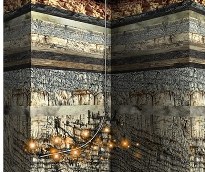Regional Oil/Gas Plays
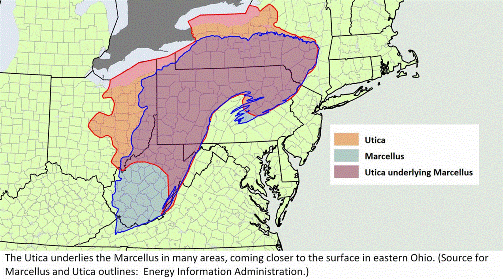
Marcellus Shale
The Marcellus Shale is a black, low density, organic rich
shale that lies beneath all of Garrett County and the
westernmost portion of Allegany County in Maryland as well
as much of Pennsylvania, Ohio, West Virginia and New York.
It is projected that nearly 500 trillion cubic feet of
natural gas could be produced from the Marcellus Shale. The
Marcellus Shale was not widely considered to be an important
gas resource until technology for tapping it had been proven
in other natural gas shale plays. The drilling of natural
gas wells into the Marcellus Shale is a highly technical
process. Capturing the gas that is locked away in the shale
requires drilling companies to use processes such as
horizontal drilling and hydraulic fracturing.
Utica Shale
The Utica shale is a large rock formation that spans an area
from Ohio to Pennsylvania and across the Canadian border.
The Utica shale takes its name from the city of Utica, New
York, where it outcrops or appears on the surface. It was
first identified along Starch Factory creek near the town of
Utica. The area of the play in Canada covers over 5,000
square Km along the St. Lawrence River and lowlands. The
Utica shale lies thousands of feet below the Marcellus shale
and is proving to hold impressive quantities of natural gas,
oil and natural gas liquids. Geologists believe that the
Utica shale could rival the massive Marcellus shale in terms
of potential for oil and gas.
Click on the images below to get a better idea of where the Marcellus and Utica shale is located. Please note, while these map were created using a lot of information, there is a lot of information that was not included and may overstate or understate some specifics.
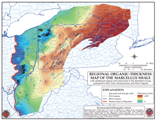 Click to Enlarge |
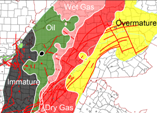 Click to Enlarge |
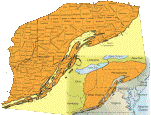 Click to Enlarge |
Hydraulic Fracturing
Hydraulic fracturing or “fracking” is a technology used to
extract natural gas that lies within a shale rock formation
thousands of feet beneath the earth’s surface. Combined with
another technique called “horizontal drilling,” natural gas
companies are able to drill for previously untapped
reserves. Horizontal drilling allows one surface well to tap
gas trapped over hundreds of acres. Once the conventional
vertical drill hits the shale formation, it turns
horizontally in several directions, much like the spokes of
a wheel. The well is then cased with steel and cement.
Explosives are places at intervals along the horizontal
section of the well to perforate the steel casing. Under
very high pressure, a combination of water, sand and
chemicals is sent deep into the earth to create cracks and
fissures in the shale rock. Those fissures are held open by
the sand, allowing the natural gas to flow through those
cracks, into the well bore and up to the surface.

